Rare Rides Icons: The Lincoln Mark Series Cars, Feeling Continental (Part XI)

We resume our Mark series coverage in the 1960 model year, which happened to be a last-of for several reasons. It was the last of the unibody Lincoln lineup that debuted in 1958, the Continental Mark line of models, and for Lincoln’s model naming scheme as a whole. We covered the visual edits in our last entry; a return to some of the garishness of 1958 that Elwood Engel tried to tone down in 1959. With the additional gingerbread hanging off of every possible surface of the Mark V Continentals for 1960, the lineup grew larger in every direction and heavier than ever before.
The visual edits made the Mark V the largest and heaviest Continental of the unibody generation. Length increased from 227.1 inches in 1959 to 227.2 inches in 1960. After all, length bragging was important for marketing purposes. Width also increased even though the Lincolns of 1958 were some of the widest passenger cars on the road, from 80.1 inches to 80.3". Height increased as well, probably down to a new suspension (see below), from 56.5 inches in 1958 and 1959 to 56.7" in 1960. The Mark V claimed a record as the longest sedan ever produced by Ford prior to five-mile-per-hour bumper regulation (we’ll get to those eventually).
There were also a few changes under the skin for the 1960 Mark Vs, though most customers were probably not aware at the time. The rear suspension design was “updated” from coil springs to simpler leaf springs. And while that might have been a technical downgrade, the leaf spring setup was more able to cope with the enormous weight of the 1960 Marks. Convenience of servicing increased as well: The Mark V's fuse box was moved under the hood instead of inside the cabin, for better access. Something a potential buyer definitely cared about, cruise control, was a new item on the options list.
Body styles remained as they were in 1959, with Continental's expanded range. Two-door options included the hardtop coupe and convertible, and there was a base four-door sedan, hardtop Landau sedan, as well as the very expensive Town Car and Limousine.
Though the entire Lincoln lineup was a continuation for one final year in 1960, one model didn’t make the cut: Capri. The entry-level Lincoln was rebranded as simply “Lincoln,” to compete with the new base model Chrysler New Yorker (1960-1962) and Series 62 Cadillac (1959-1960). Of those, the Chrysler was notable for its new unibody design. Said design was not shared with the upmarket Imperial models, which used the body-on-frame D platform from 1957 to 1966.
The base Lincoln was a combo of the 1959 trim of the Capri with the new front and rear clip designs from the Premiere and Marks. The only middling model was the Premiere, while all above were Continental Mark V variants. Lincoln rolled them out on the showroom floor one more time, but they most certainly did not fly off the lot.
Lincoln’s overall sales fell about eight percent in 1960, a year that saw general stagnation in the U.S. car market. Total company sales were 24,820, which was better than Imperial’s 17,719 figure, but pathetic compared to juggernaut Cadillac and its 142,184 sales. Edsel sold 3,008 cars that year, as the brand was put out of its misery.
Not quite half the Lincolns sold that year were Mark V Continentals, 11,096 examples. The most popular body style was again the Landau hardtop sedan, with 6,604 sales. The convertible remained the next most popular choice, with 2,044 sales. The hardtop coupe found 1,461 buyers, considerably more than the basic sedan’s sales of 807. The second year of the Town Car and Limousine saw an increase in sales for the Town Car (136 versus 78 the previous year), but the Limousine take rate dropped from 49 to just 34.
It’s not difficult to understand why customers were not eager to pony up for the sticker of the Town Car and Limousine. Apart from their forward slanted rear window and additional leg room, there was little to distinguish them from any other Continental sedan. And they were not available in pillarless hardtop guise with their “formal” attitudes, at a time when the hardtop was a big seller.
In their final year, the Landau sedan asked $6,840 ($69,172 adj.), while the convertible was $7,055 ($71,347 adj.). Town Car asked $9,205 ($93,090 adj.), and the Limousine demanded $10,235 ($103,506 adj.). Prices for the Mark V cars were almost identical to Mark IV pricing of 1959.
The 1960 Mark Vs represented a tipping point of size, weight, garishness, and lack of consumer interest. The 1958 to 1960 models would later be deemed the “forgotten Marks,” while other garish luxury styling of the period was celebrated (especially for Cadillac). The folks at Lincoln’s marketing department knew change was in the wind in 1960, and made it obvious via an alteration in the brochures.
In 1959, the “Mark IV Continental” branding was an update to the previous year’s “Continental Mark III,” as it put the Mark name front and center. In 1960 brochures said “Lincoln Continental” and “Mark V” separately, but never together.
“Ever since its beginnings as a custom-built automobile for a privileged few,” the brochure reads, “the Lincoln Continental has been famous as America’s most distinctive and luxurious motorcar. The Mark V now carries this tradition to a new peak of perfection.”
The separation was of course intentional, as in 1961 Lincoln unceremoniously killed off the Mark cars and all other models aside from Continental. Lincoln lost $60 million between 1958 and 1960 as it floundered around, a shocking figure of over $550 million in today’s money. In a sea change moment for 1961, all Lincolns were suddenly Continentals. Mark, Premiere, Capri, base models? No.
There were two body styles on offer: a four-door hardtop sedan, and a four-door convertible. No two-door convertible, no coupe, no pillared sedan, no Town Car, no Limousine. And indeed no garish styling, as Lincoln went full mid-century modern with a new look penned by Elwood Engel. The new Continental looked sleek and streamlined and was an almost immediate design classic. The new 1961 Continentals had a wheelbase that was eight inches shorter than in 1960, and an overall length 15 inches shorter.
And while I’m sure you’d like me to wax on a bit about the 1961 models, it’s outside the scope of this series. Remember, there were no Mark cars on offer throughout the Sixties. It was all Continental, all the time. Things didn’t change until 1968 when a vice president at Ford named Lee Iacocca wanted Lincoln to build a new personal luxury car (a genre for which he held an eternal flame).
We pause there for today and consider what could have been. An upscale halo in 1961 called the Mark VI? A two-door convertible Continental like the original of 1939? Oh, the long-extinct possibilities.
[Images: Ford]
Become a TTAC insider. Get the latest news, features, TTAC takes, and everything else that gets to the truth about cars first by subscribing to our newsletter.

Interested in lots of cars and their various historical contexts. Started writing articles for TTAC in late 2016, when my first posts were QOTDs. From there I started a few new series like Rare Rides, Buy/Drive/Burn, Abandoned History, and most recently Rare Rides Icons. Operating from a home base in Cincinnati, Ohio, a relative auto journalist dead zone. Many of my articles are prompted by something I'll see on social media that sparks my interest and causes me to research. Finding articles and information from the early days of the internet and beyond that covers the little details lost to time: trim packages, color and wheel choices, interior fabrics. Beyond those, I'm fascinated by automotive industry experiments, both failures and successes. Lately I've taken an interest in AI, and generating "what if" type images for car models long dead. Reincarnating a modern Toyota Paseo, Lincoln Mark IX, or Isuzu Trooper through a text prompt is fun. Fun to post them on Twitter too, and watch people overreact. To that end, the social media I use most is Twitter, @CoreyLewis86. I also contribute pieces for Forbes Wheels and Forbes Home.
More by Corey Lewis
Latest Car Reviews
Read moreLatest Product Reviews
Read moreRecent Comments
- Danddd Just say no to CVTs unless you like the sound of droning.
- Oberkanone GM will have 30 EV models by 2025. Over 40% of GM sales will be EV by 2025.quote - Marry Barra circa 2020Including 4 Chevy EV, 2 Buick EV, and 4 Cadillac EV.
- Dwford There's plenty of time between now and 2030-35 to design and sell through a whole new generation of ICE vehicles, if not 2 generations. Chevy seems to be on a dual track plan with ICE and EV versions of the Equinox and Blazer nameplates. No reason Cadillac can't do something similar.
- Kwik_Shift_Pro4X Poop or get off the pot.
- TheMrFreeze The wife unit and I refuse to buy a white/black/grey/silver car...life's too short for boring. As it happens we both drive orange cars right now but slightly different shades. Total coincidence, just happened that the used cars we found that met our requirements (ie: manual trans and at least some amount of character) both happened to be orange. My previous daily driver was orange as well, again total coincidence...they just seem to find us I guess...



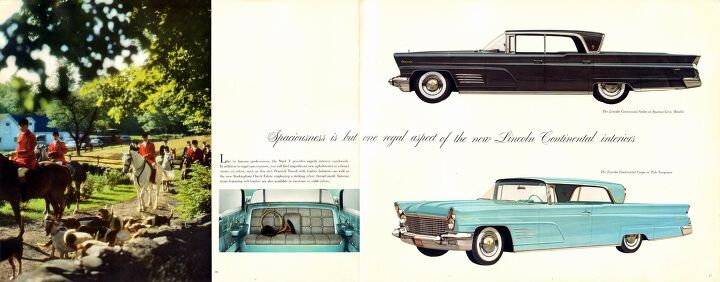


















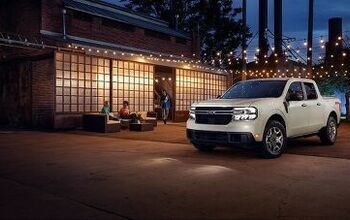
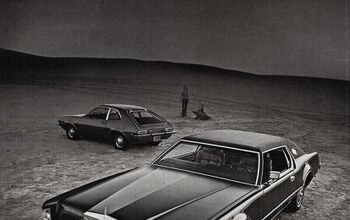
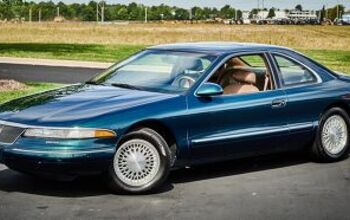
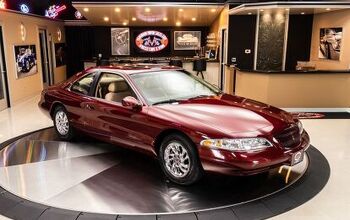
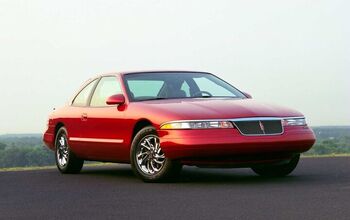
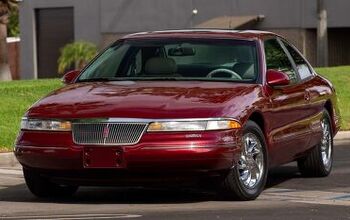

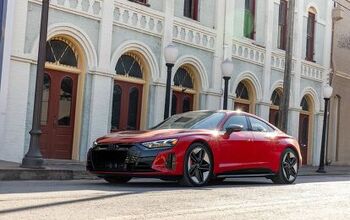







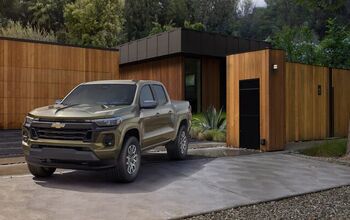
Comments
Join the conversation
Wait, so you're not going to have a feature about the only Continental anyone talks about?
Articles on and on about the '50s cars and you're going to blueball us like this?
I'm definitely not a fan of the styling. The early 60's Galaxie's were better proportioned than these.